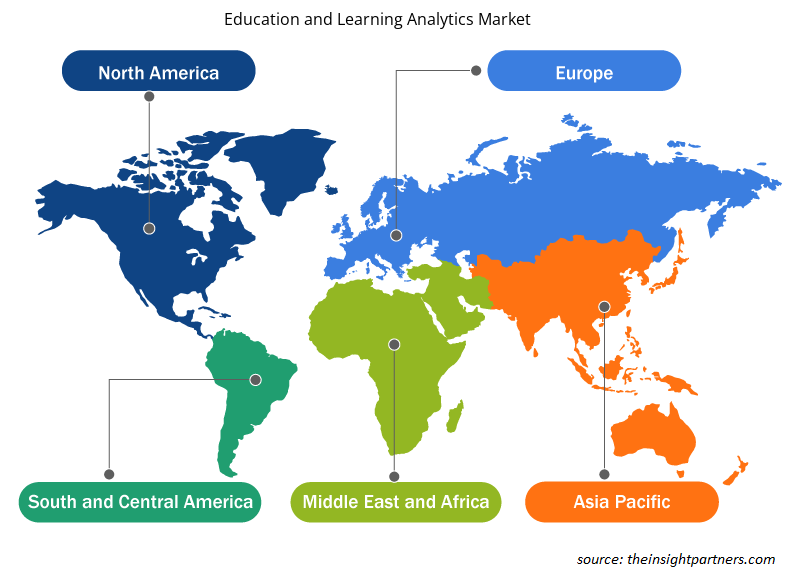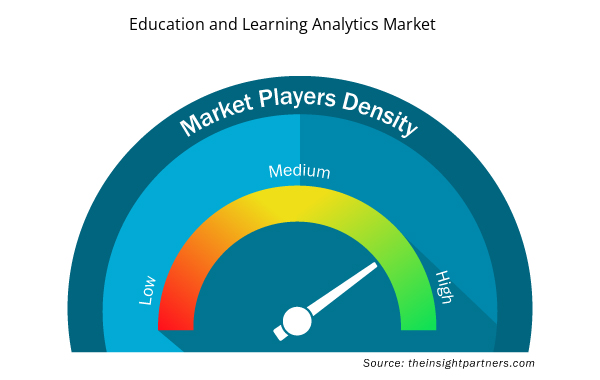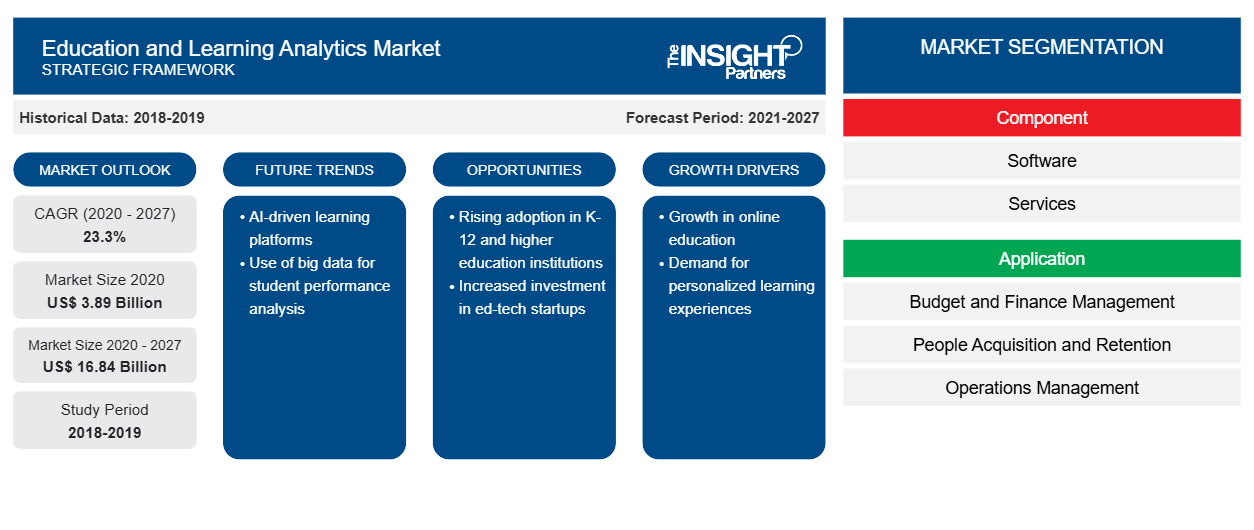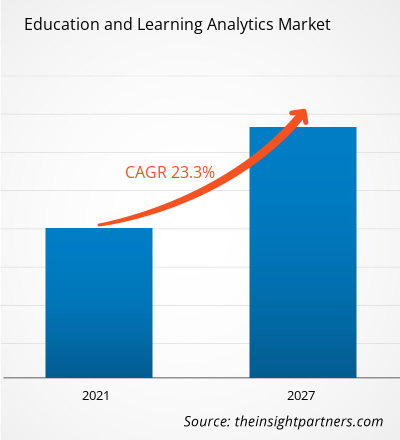[研究报告] 教育和学习分析市场预计将从 2020 年的 38.903 亿美元增长到 2027 年的 168.359 亿美元;预计 2020 年至 2027 年的复合年增长率为 23.3%。
在线课程和专业认证需求的不断增长推动了市场的增长。在线课程需求的不断增长和在线课程注册数量的急剧增加为教育和学习分析市场的供应商创造了巨大的机会。由于全球市场上存在大量参与者,在线课程市场高度分散。学习分析供应商必须专注于与在线课程提供商的合作,以扩大其全球影响力。
在线学习正在成为教育领域不可或缺的一部分。越来越多的学生寻求灵活的证书、课程和学位课程形式,以支持职业安置和继续深造,这推动了在线课程的招生。在校内就读的学生也专注于在入学期间注册混合到完全在线的课程。在线硕士学位在学生中蓬勃发展,因为许多著名的大型机构正在转向各种在线学位课程,因为在线学位课程在学习体验中提供了高质量的技术支持。此外,企业专业人士也在专注于学习各种课程以促进他们的职业发展。因此,对在线课程的激增需求预计将为全球教育和学习分析供应商提供巨大的机会。
定制此报告以满足您的需求
您可以免费定制任何报告,包括本报告的部分内容、国家级分析、Excel 数据包,以及为初创企业和大学提供优惠和折扣
- 获取此报告的关键市场趋势。这个免费样品将包括数据分析,从市场趋势到估计和预测。
COVID-19 疫情对教育和学习分析市场的影响
尽管人们对 COVID-19 可能造成的损害持有不同观点,但事实是 COVID-19 正在全球蔓延。美国、加拿大、欧洲、非洲、中东、印度、澳大利亚、韩国、印度和日本等多个国家/地区的新增病例不断增加。尽管对各种业务的影响众所周知,但教育行业也面临着近年来最大的破坏。
世界各地的教育机构都在通过转向在线学习来应对旅行禁令和隔离。此次紧急情况可能会引发在线教育热潮——或者至少可以让各国更好地应对下一次紧急情况
市场洞察——教育和学习分析市场
发展中国家的教育机构越来越多地采用先进技术
教育机构正在大力投资先进技术,以获得竞争优势并采用最佳的教育系统。另一方面,学生也愿意投资以获得最好的教育。教育机构和学生都有很大潜力投资技术驱动的教育系统,这对市场增长产生了很大的影响。学校和大学正在投资技术以改善其教育运作,例如财务规划、课程规划、学生保留以及向学生传递信息的有效过程。
教育行业尝试了各种各样的技术进步,从课堂教学到基于应用程序的学习。一些技术已成为高等教育系统的永久组成部分。快速发展的技术正在改变教育行业。
大数据分析等先进技术为教育工作者提供了前所未有的机会,使他们能够以新的方式接触学生。它提供了对学生学习体验的更深入了解,也有助于评估教育系统的状况。大数据在教育领域发挥关键作用的几个关键领域包括定制课程、提高学生成绩、减少辍学等。同样,学习分析能够改善课程交付流程、绩效管理、运营管理、财务管理等。所有这些与技术相关的优势使教育机构能够采用智能技术解决方案。在预测期内,教育领域越来越多地采用先进技术解决方案,预计将推动全球教育和学习分析市场的发展。
基于组件的洞察
根据组成部分,教育和学习分析市场分为软件和服务。软件部分在 2019 年占据了最大的市场份额。
教育和学习分析市场的参与者主要专注于开发先进、高效的产品。
- 2019 年,SAS Institute Inc. 投资了分析背后的人才,帮助教育新一代人改变一切可能,并为转型经济培养劳动力。SAS® 2019 年全球论坛期间推出了几项新计划和举措,这些计划和举措都是 SAS 致力于促进全民分析教育的总体承诺的一部分。
- 2019 年,微软从旧金山公司 BrightBytes 收购了 DataSense,这是一款面向教育解决方案提供商和美国学区的集成平台即服务 (IPaaS) 产品。作为交易的一部分,开发团队将加入微软的全球教育部门。
教育和学习分析市场细分如下:
教育和学习分析市场区域洞察
Insight Partners 的分析师已详细解释了预测期内影响教育和学习分析市场的区域趋势和因素。本节还讨论了北美、欧洲、亚太地区、中东和非洲以及南美和中美洲的教育和学习分析市场细分和地理位置。

- 获取教育和学习分析市场的区域特定数据
教育和学习分析市场报告范围
| 报告属性 | 细节 |
|---|---|
| 2020 年市场规模 | 38.9 亿美元 |
| 2027 年市场规模 | 168.4亿美元 |
| 全球复合年增长率(2020 - 2027 年) | 23.3% |
| 史料 | 2018-2019 |
| 预测期 | 2021-2027 |
| 涵盖的领域 | 按组件
|
| 覆盖地区和国家 | 北美
|
| 市场领导者和主要公司简介 |
|
教育和学习分析市场参与者密度:了解其对业务动态的影响
教育和学习分析市场正在快速增长,这得益于最终用户需求的不断增长,而这些需求又源于消费者偏好的不断变化、技术进步以及对产品优势的认识不断提高等因素。随着需求的增加,企业正在扩大其产品范围,进行创新以满足消费者的需求,并利用新兴趋势,从而进一步推动市场增长。
市场参与者密度是指在特定市场或行业内运营的企业或公司的分布情况。它表明在给定市场空间中,相对于其规模或总市场价值,有多少竞争对手(市场参与者)存在。
在教育和学习分析市场运营的主要公司有:
- 分水岭系统有限公司
- SAS 研究所
- 思爱普
- 微软公司
- 最快乐的心灵
免责声明:上面列出的公司没有按照任何特定顺序排列。

- 了解教育和学习分析市场顶级关键参与者的概况
教育和学习分析市场 – 按组成部分
- 软件
- 服务
教育和学习分析市场 – 按应用
- 绩效管理
- 运营管理
- 预算与财务管理
- 人才招募与保留
- 课程开发与干预管理
教育和学习分析市场 – 按最终用户
- 学术
- 公司的
教育和学习分析市场 – 按地区划分
北美
- 我们
- 加拿大
- 墨西哥
欧洲
- 法国
- 德国
- 意大利
- 俄罗斯
- 英国
- 欧洲其他地区
亚太地区 (APAC)
- 日本
- 中国
- 澳大利亚
- 印度
- 韩国
- 亚太地区其他地区
中东和非洲 (MEA)
- 沙特阿拉伯
- 阿联酋
- 南非
- MEA 其他地区
南美洲 (SAM)
- 巴西
- 阿根廷
- SAM 其余部分
教育和学习分析市场 – 公司简介
- 分水岭系统有限公司
- SAS 研究所
- 思爱普
- 微软公司
- 最快乐的心灵
- 埃卢西安公司
- 黑板公司
- Alteryx 公司
- InetSoft 技术公司
- Saba 软件公司
- 历史分析(2 年)、基准年、预测(7 年)及复合年增长率
- PEST 和 SWOT 分析
- 市场规模价值/数量 - 全球、区域、国家
- 行业和竞争格局
- Excel 数据集



Report Coverage
Revenue forecast, Company Analysis, Industry landscape, Growth factors, and Trends

Segment Covered
This text is related
to segments covered.

Regional Scope
North America, Europe, Asia Pacific, Middle East & Africa, South & Central America

Country Scope
This text is related
to country scope.
常见问题
The education and learning analytics market was dominated by North America due to developed economies such as the US, Canada, and Mexico. The US and Canada are among the most advanced countries in the region, in terms of technology adoption in almost every sector, including education and training. Moreover, the presence of major education and learning analytics players, along with the widespread awareness regarding these solutions, is anticipated to further propel the market growth during the forecast period.
Increasing demand for quality assurance and quality improvement in education system is driving the demand for learning analytics. Many educational institutes are focusing on quality assurance and quality improvement in the education system to fulfill the demand from end-users. Teaching staffs are using various data to improve teaching practices. Most of the colleges and universities are using learning analytics tool as a diagnostic tool on an individual and systematic level. At the individual level, the learning analytics are used for identifying issues, and at a systematic level, it is used for the design of modules and degree programs.
Software segment by component in the education and learning analytics market led the market in 2019. Along with increasing digitalization, businesses of all sizes are focusing on adopting automated solutions to ease their business process. The advancements in applications of Information, Communication, and Technology (ICT) are paving the way for effective businesses. Education and learning analytics software helps to improve the quality of education is increasing with the growing volume of student’s data generated from different systems, such as Virtual Learning Environment (VLE), Learning Management System (LMS), student information system, or a variety of library systems. The software segment exceeds the services segment and is expected to witness the maturation in the future due to the higher adoption of education and learning analytics software solutions.
Trends and growth analysis reports related to Technology, Media and Telecommunications : READ MORE..
The List of Companies - Global Education and Learning Analytics Market
- Watershed Systems, Inc.
- SAS Institute Inc.
- SAP SE
- Microsoft Corporation
- Happiest Minds
- Ellucian Company L.P.
- Blackboard Inc.
- Alteryx Inc.
- InetSoft Technology Corp.
- Saba Software, Inc.
The Insight Partners performs research in 4 major stages: Data Collection & Secondary Research, Primary Research, Data Analysis and Data Triangulation & Final Review.
- Data Collection and Secondary Research:
As a market research and consulting firm operating from a decade, we have published and advised several client across the globe. First step for any study will start with an assessment of currently available data and insights from existing reports. Further, historical and current market information is collected from Investor Presentations, Annual Reports, SEC Filings, etc., and other information related to company’s performance and market positioning are gathered from Paid Databases (Factiva, Hoovers, and Reuters) and various other publications available in public domain.
Several associations trade associates, technical forums, institutes, societies and organization are accessed to gain technical as well as market related insights through their publications such as research papers, blogs and press releases related to the studies are referred to get cues about the market. Further, white papers, journals, magazines, and other news articles published in last 3 years are scrutinized and analyzed to understand the current market trends.
- Primary Research:
The primarily interview analysis comprise of data obtained from industry participants interview and answers to survey questions gathered by in-house primary team.
For primary research, interviews are conducted with industry experts/CEOs/Marketing Managers/VPs/Subject Matter Experts from both demand and supply side to get a 360-degree view of the market. The primary team conducts several interviews based on the complexity of the markets to understand the various market trends and dynamics which makes research more credible and precise.
A typical research interview fulfils the following functions:
- Provides first-hand information on the market size, market trends, growth trends, competitive landscape, and outlook
- Validates and strengthens in-house secondary research findings
- Develops the analysis team’s expertise and market understanding
Primary research involves email interactions and telephone interviews for each market, category, segment, and sub-segment across geographies. The participants who typically take part in such a process include, but are not limited to:
- Industry participants: VPs, business development managers, market intelligence managers and national sales managers
- Outside experts: Valuation experts, research analysts and key opinion leaders specializing in the electronics and semiconductor industry.
Below is the breakup of our primary respondents by company, designation, and region:

Once we receive the confirmation from primary research sources or primary respondents, we finalize the base year market estimation and forecast the data as per the macroeconomic and microeconomic factors assessed during data collection.
- Data Analysis:
Once data is validated through both secondary as well as primary respondents, we finalize the market estimations by hypothesis formulation and factor analysis at regional and country level.
- Macro-Economic Factor Analysis:
We analyse macroeconomic indicators such the gross domestic product (GDP), increase in the demand for goods and services across industries, technological advancement, regional economic growth, governmental policies, the influence of COVID-19, PEST analysis, and other aspects. This analysis aids in setting benchmarks for various nations/regions and approximating market splits. Additionally, the general trend of the aforementioned components aid in determining the market's development possibilities.
- Country Level Data:
Various factors that are especially aligned to the country are taken into account to determine the market size for a certain area and country, including the presence of vendors, such as headquarters and offices, the country's GDP, demand patterns, and industry growth. To comprehend the market dynamics for the nation, a number of growth variables, inhibitors, application areas, and current market trends are researched. The aforementioned elements aid in determining the country's overall market's growth potential.
- Company Profile:
The “Table of Contents” is formulated by listing and analyzing more than 25 - 30 companies operating in the market ecosystem across geographies. However, we profile only 10 companies as a standard practice in our syndicate reports. These 10 companies comprise leading, emerging, and regional players. Nonetheless, our analysis is not restricted to the 10 listed companies, we also analyze other companies present in the market to develop a holistic view and understand the prevailing trends. The “Company Profiles” section in the report covers key facts, business description, products & services, financial information, SWOT analysis, and key developments. The financial information presented is extracted from the annual reports and official documents of the publicly listed companies. Upon collecting the information for the sections of respective companies, we verify them via various primary sources and then compile the data in respective company profiles. The company level information helps us in deriving the base number as well as in forecasting the market size.
- Developing Base Number:
Aggregation of sales statistics (2020-2022) and macro-economic factor, and other secondary and primary research insights are utilized to arrive at base number and related market shares for 2022. The data gaps are identified in this step and relevant market data is analyzed, collected from paid primary interviews or databases. On finalizing the base year market size, forecasts are developed on the basis of macro-economic, industry and market growth factors and company level analysis.
- Data Triangulation and Final Review:
The market findings and base year market size calculations are validated from supply as well as demand side. Demand side validations are based on macro-economic factor analysis and benchmarks for respective regions and countries. In case of supply side validations, revenues of major companies are estimated (in case not available) based on industry benchmark, approximate number of employees, product portfolio, and primary interviews revenues are gathered. Further revenue from target product/service segment is assessed to avoid overshooting of market statistics. In case of heavy deviations between supply and demand side values, all thes steps are repeated to achieve synchronization.
We follow an iterative model, wherein we share our research findings with Subject Matter Experts (SME’s) and Key Opinion Leaders (KOLs) until consensus view of the market is not formulated – this model negates any drastic deviation in the opinions of experts. Only validated and universally acceptable research findings are quoted in our reports.
We have important check points that we use to validate our research findings – which we call – data triangulation, where we validate the information, we generate from secondary sources with primary interviews and then we re-validate with our internal data bases and Subject matter experts. This comprehensive model enables us to deliver high quality, reliable data in shortest possible time.


 获取此报告的免费样本
获取此报告的免费样本